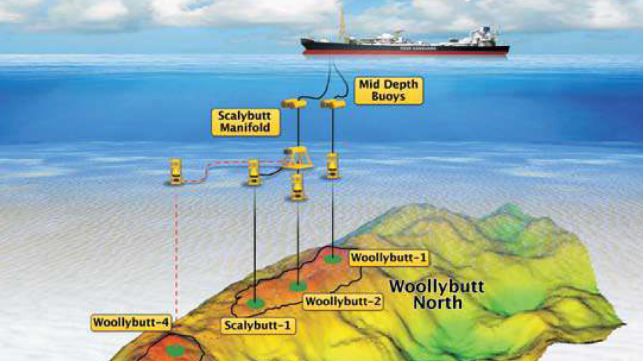Australian Regulators Investigate Failed Mooring at Eni Offshore Field

Australian offshore energy regulator NOPSEMA has asked Italian oil major Eni to secure a mid-depth buoy that unexpected surfaced at Eni's curiously-named Woollybutt field off the coast of Western Australia. (Woollybutt is an Australian name for several species of eucalyptus.)
The Woollybutt field ceased production in 2012, and Eni received approval for its decommissioning plans in 2019. This January, the field's detachable single-point mooring - once used to secure an FPSO - sank unexpectedly. An inspection concluded that the sinking of the mooring buoy was likely the result of a "failure to maintain
adequate cathodic protection which protects the buoy from corrosion." The inspector also identified deficiencies in the integrity management of the facility’s two mid-depth buoy (MDB)
mooring systems. Each 40-tonne MDB is secured by two mooring chains to a weighted anchor on the seabed, and they are intended to float about 150 feet below the surface. They were designed for a 15-year lifespan, and they have been in place for 17 years.
"Eni could not demonstrate effective inspection and maintenance activities were being conducted on the MDBs, mooring chains and mooring systems to ensure their integrity and that and they were fit for service," the inspector wrote. "There were no records of chain wear measurements or assessment of the MDB mooring chains available."
In May, based on these findings, NOPSEMA issued an order to Eni requiring the company to prevent or reduce the risk of a mooring system failure resulting in a mid-depth buoy (MDB) floating to the surface. The order gave Eni up to 180 days to inspect the buoys' mooring chains and assess their integrity.
This previously-identified safety issue came to a head in late August, when one of the field's two mid-depth buoys was sighted and confirmed on the surface. Eni reported that it is still attached to the field's subsea infrastructure, and it is located within the bounds of a designated safety zone, but NOPSEMA said that it believes that "the failure of the tethering system and physical presence of an object of this size poses a threat to the safety of vessels in the area" - and possibly a threat to the integrity of the field's subsea infrastructure and wells. The agency has launched an investigation into the incident.
